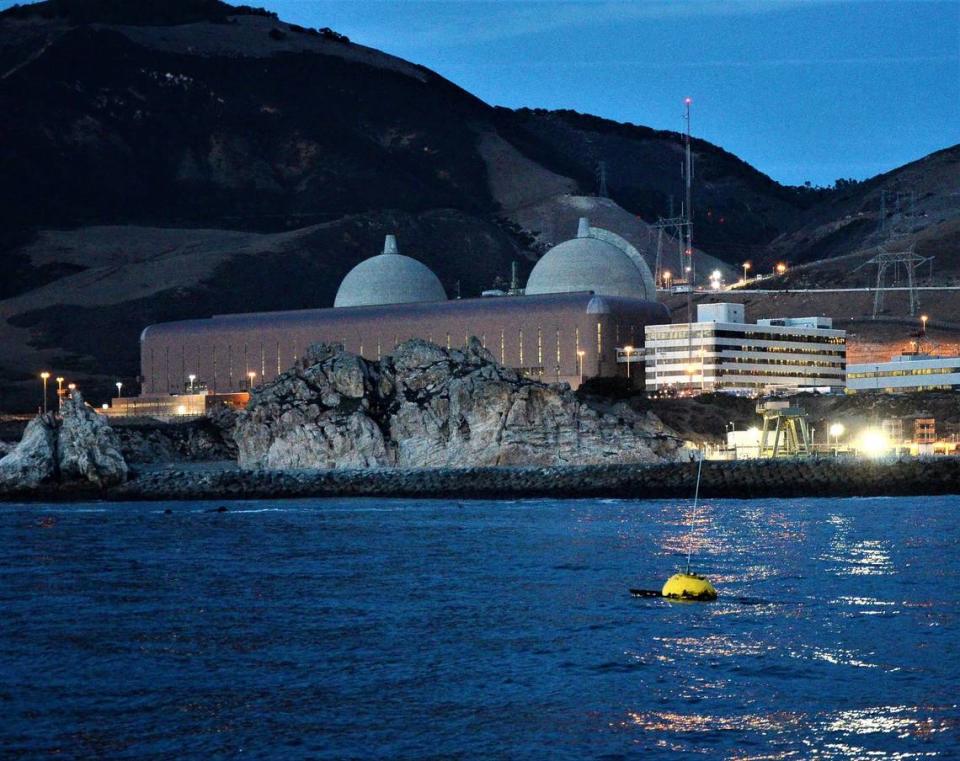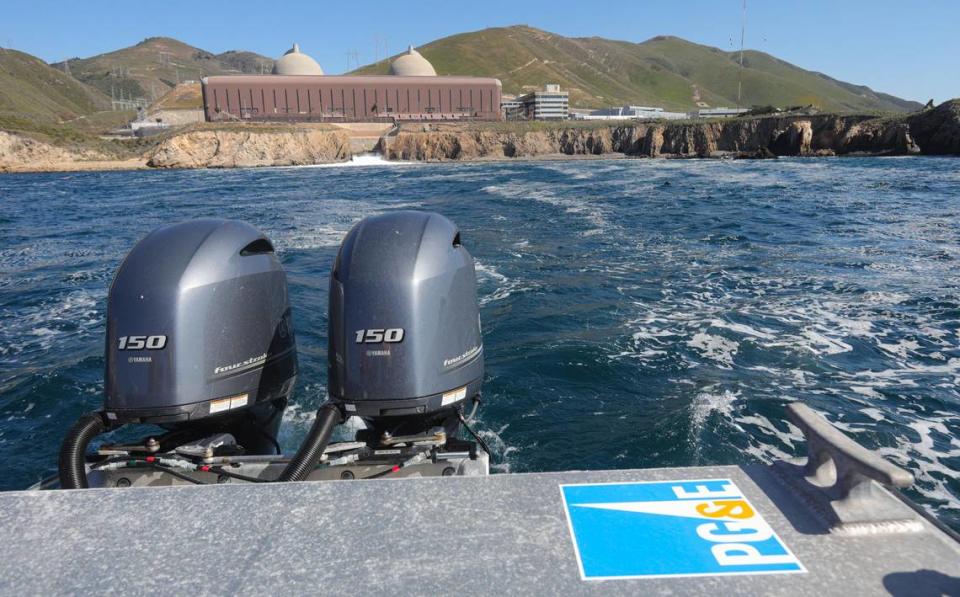Workshop recognizes keeping Diablo Canyon open is ‘a last resort,’ with many questions
More than 600 people tuned in Friday evening to hear local and state officials discuss the future of the Diablo Canyon nuclear power plant in San Luis Obispo County.
The meeting was hosted by the California Energy Commission alongside the Governor’s Office and California Independent System Operator.
It began at 4 p.m. and largely focused on the future of the state’s energy grid given the failure to procure enough clean or renewable energy in time to replace the plant before its scheduled closure dates in 2024 and 2025.
And the meeting came just hours after a proposed bill by the Governor’s Office was released that revealed a plan to loan PG&E up to $1.4 billion to help fund the power plant’s continued operations through 2035. A portion of that loan could be forgivable, and the extension under the proposed legislation would allow for the plant’s operations to go forward as exempt from review under the California Environmental Quality Act.
The California Legislature has until Aug. 31 to determine whether to attach the draft bill to the state’s budget as a trailer bill.
“It is a very difficult conversation and it’s a last resort,” said Ana Matosantos, the governor’s cabinet secretary, during Friday’s meeting.
”We are behind where we need to be in bringing our clean resources online to ensure that we can retire these resources,” Matosantos added. She noted that the extension of Diablo Canyon would be “as short as possible” before replacement energy sources could be procured.
Should the life of the plant be extended, however, it would need to undergo the federal Nuclear Regulatory Commission relicensing process, which would require environmental and safety reviews.

Federal money also may be available to fund the extension of Diablo Canyon — specifically from a pool of $6 billion under the federal Department of Energy’s Civil Nuclear Credit program. PG&E may not qualify for those funds, however, and must submit an application by Sept. 6.
The Energy Commission’s meeting began with statements from politicians or their representatives.
State Sen. John Laird, D-Santa Cruz, opened with comments that arguably summed up many of the concerns and unanswered questions posed by many others throughout the entirety of the meeting.
“The scheduled 2025 plant closure has been a settled issue, and the decision for that decommissioning was through a long process involving many stakeholders, some of whom gave on their requests and concerns in exchange for that closure date,” Laird said. “The discussion over a possible extension is taking place quickly.”
Laird referenced PG&E’s 2016 decision to close the power plant, which eventually resulted in a 2018 Senate bill to provide millions of dollars to support San Luis Obispo County in the transition from Diablo Canyon as a revenue source. Those dollars have since been distributed continually to local school districts, environmental organizations and government entities.
“As recently as March of this year, both the state administration and PG&E stated that plans to decommission Diablo Canyon power plant were on track as scheduled by 2025,” he continued. “In April of this year, that changed.”

Closures of Diablo Canyon and other power plants leave gaps in state electricity grid, officials say
Should Diablo Canyon close, state officials are concerned that it would expand gaps in the state’s electricity grid leading to power blackouts in the face of more frequent and severe heatwaves and weather events due to climate change. Alongside the scheduled closure of Diablo Canyon, which produces about 2,200 megawatts of electricity, other power plants around the state are expected to go offline in upcoming years.
“All in all we are looking at 6,000 megawatts of retirement happening as we are trying to contend with the uncertainties of the climate change and also looking at unprecedented developments in clean energy resources,” said Siva Gunda, vice chair of the California Energy Commission, during Friday’s meeting.
Power plant retirements compound with a loss in hydropower from extreme drought and transmission capacity due to wildfire, Gunda added. Plus, Gunda said supply chain issues stemming from the COVID-19 pandemic and geopolitics has created greater uncertainty on construction timelines for clean and renewable energy sources and storage projects.
“I don’t think we yet have all the answers as to whether Diablo Canyon’s continued operation is the key to energy reliability in California,” Laird said at the meeting. “But we do know what the challenges are that would have to be met if there’s to be an extension of Diablo Canyon’s life.”

Many unanswered questions around Diablo Canyon’s future
Laird laid out several issues that he said must be addressed before he could consider a proposal to extend Diablo Canyon’s life valid.
These included safety concerns, who foots the bill for the extension of the life of the power plant, storage of spent nuclear waste and seismic concerns. He also noted the once-through cooling system is permitted only through 2025 and its environmental impacts must be mitigated should it continue to operate.
Additionally, Laird explained his concerns over the state and federal permitting processes involved in continuing Diablo Canyon’s operations, noting that “there’s a fine line between overriding processes and speeding them up.”

He also said stakeholder “involvement and agreement” must be achieved before the plant’s life could be extended.
Looking further into the future, Laird noted that the process of transferring the 12,000 acres of Diablo Canyon lands must not be delayed even if the plant’s life is extended. And he spoke of concern about whether offshore wind energy facilities expected to be built in the ocean off San Luis Obispo County’s coast would be able to connect to the nuclear power plant should its operations continue beyond the scheduled closure date.
“If we were to continue to operate Diablo Canyon longer to avoid future blackouts and otherwise stabilize the state’s energy grid, we must use the time provided by that extension to create a Marshall Plan to move us toward the state’s ambitious goal of zero carbon electricity by 2045,” he said, referencing the 1948 United States initiative to provide aid to Western Europe after WWII.
Public comments lasted well over three hours long
Friday’s workshop included more than three hours of public comment from people all over the country and were divided on the issue of whether Diablo Canyon should close as scheduled or remain open.
Chief concerns echoed throughout the comments included seismic safety, grid reliability in the absence of the power plant, costs to ratepayers regardless of the plant’s future and environmental issues.
One commenter, Jon McHugh, noted he was worried about the plant’s aging infrastructure and what could happen during an earthquake should Diablo Canyon continue to operate.
“Extending the operation of a 40-year-old power plant another 20 years is concerning, given that this is the most seismically active site in the entire United States,” he said.
Several studies over the past few decades dispute the vulnerability of Diablo Canyon in the event of an earthquake, and PG&E has repeatedly said the plant can currently withstand earthquakes, tsunamis and flooding.
David Weisman, legislative director for the Alliance for Nuclear Responsibility, an anti-nuclear waste organization, expressed his frustration over the amount of money that could be spent to keep the power plant open.
“After multiple bankruptcies, and recent years of legislative bailouts for their criminal wildfire transgressions, when will PG&E stop being the bottomless money pit into which our legislators continue to dump our taxpayer and ratepayer dollars?” he asked during Friday’s meeting.
Eric Meyer, founder and executive director at the pro-nuclear organization Generation Atomic, said he saw potential savings to ratepayers should the power plant continue to operate past its closing date, and noted that the extension could prevent greenhouse gas emissions from other power plants that would need to compensate for the lost energy production.
“When I look ahead at what the future of California looks like without Diablo, it is very, very bad,” Meyer said. “And it’s interesting, all the people that are protesting here are probably not going to be around when climate change gets really bad.”
Conveying his support for keeping the plant running beyond its expiration date, Ryan Pickering, an energy policy researcher, said during Friday’s meeting that those opposed to the plant’s continued operations were spreading “unsubstantiated nuclear fear.”
“California is learning firsthand the challenges of the energy transition,” he said. “We are indeed behind schedule, and it’s not too late to get back on track. Power outages are a threat to California’s prosperity — keeping Diablo Canyon online will save lives. Leaders must act with honesty, integrity, humility and courage in the weeks ahead to rethink your strategy in California.”
The meeting ended just after 9:30 p.m., with no solid indication on what the next steps from the state on Diablo Canyon may be.
“Thank you to all of you, stakeholders and members of the public and community members, who participated and provided really critical input that we will take seriously,” Matosantos said to close out the meeting, adding that the Governor’s Office will “dig into many of the important issues that have been raised.”


 Yahoo Movies
Yahoo Movies 
